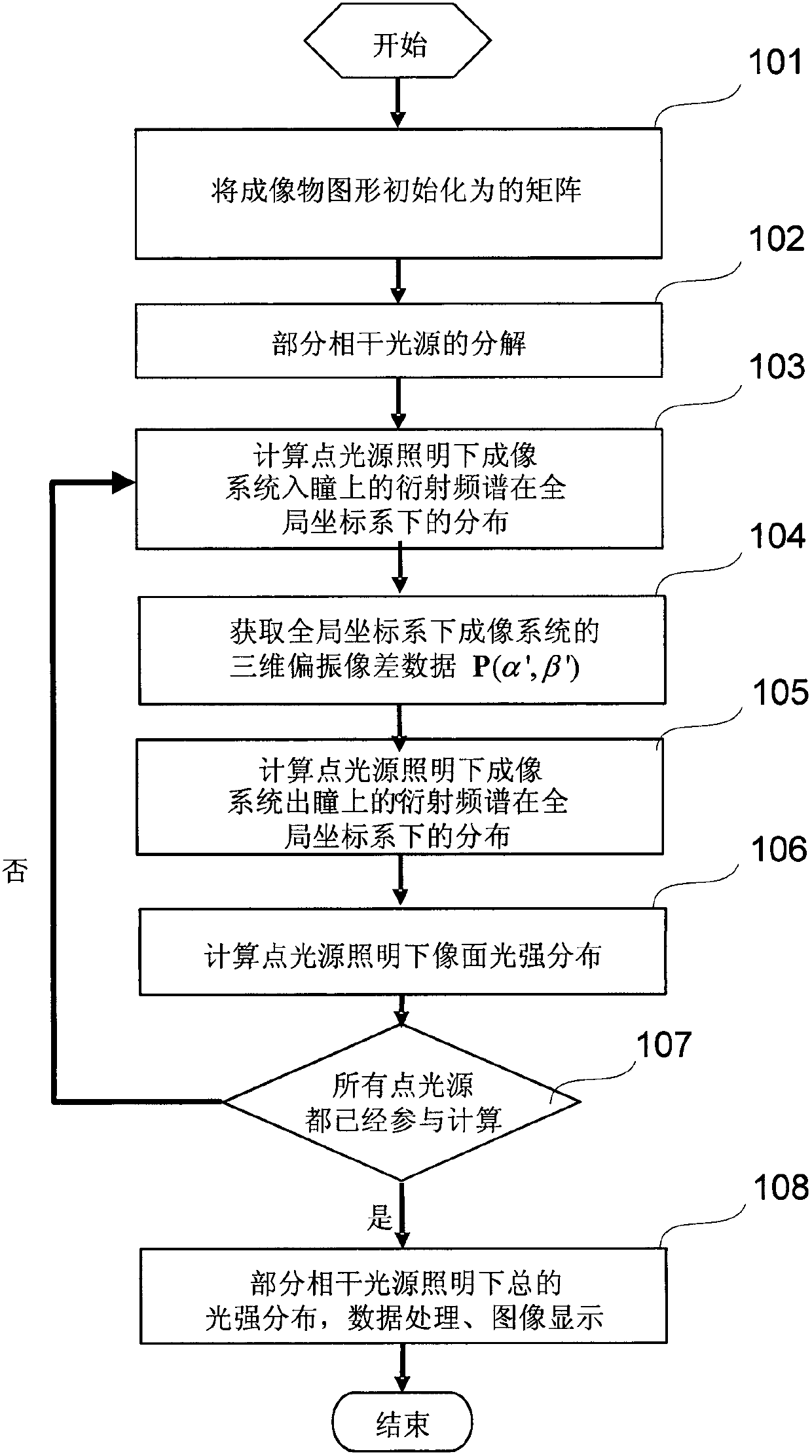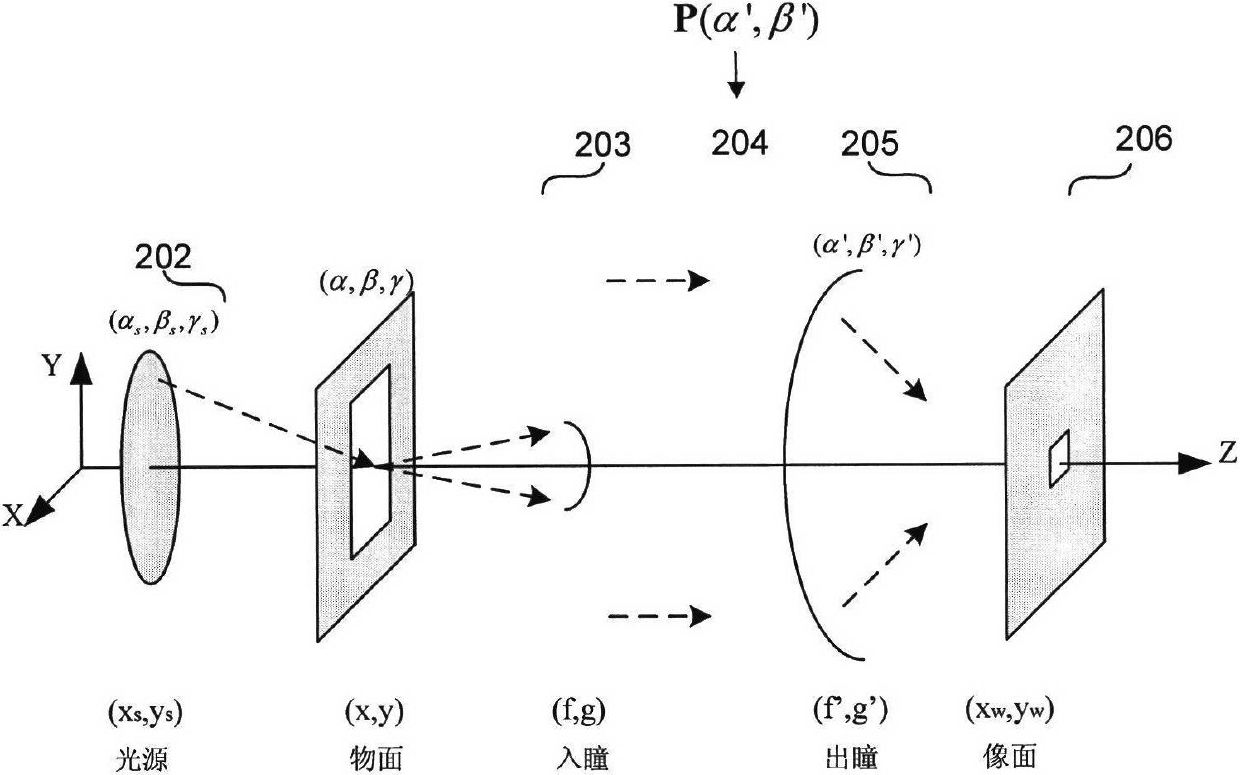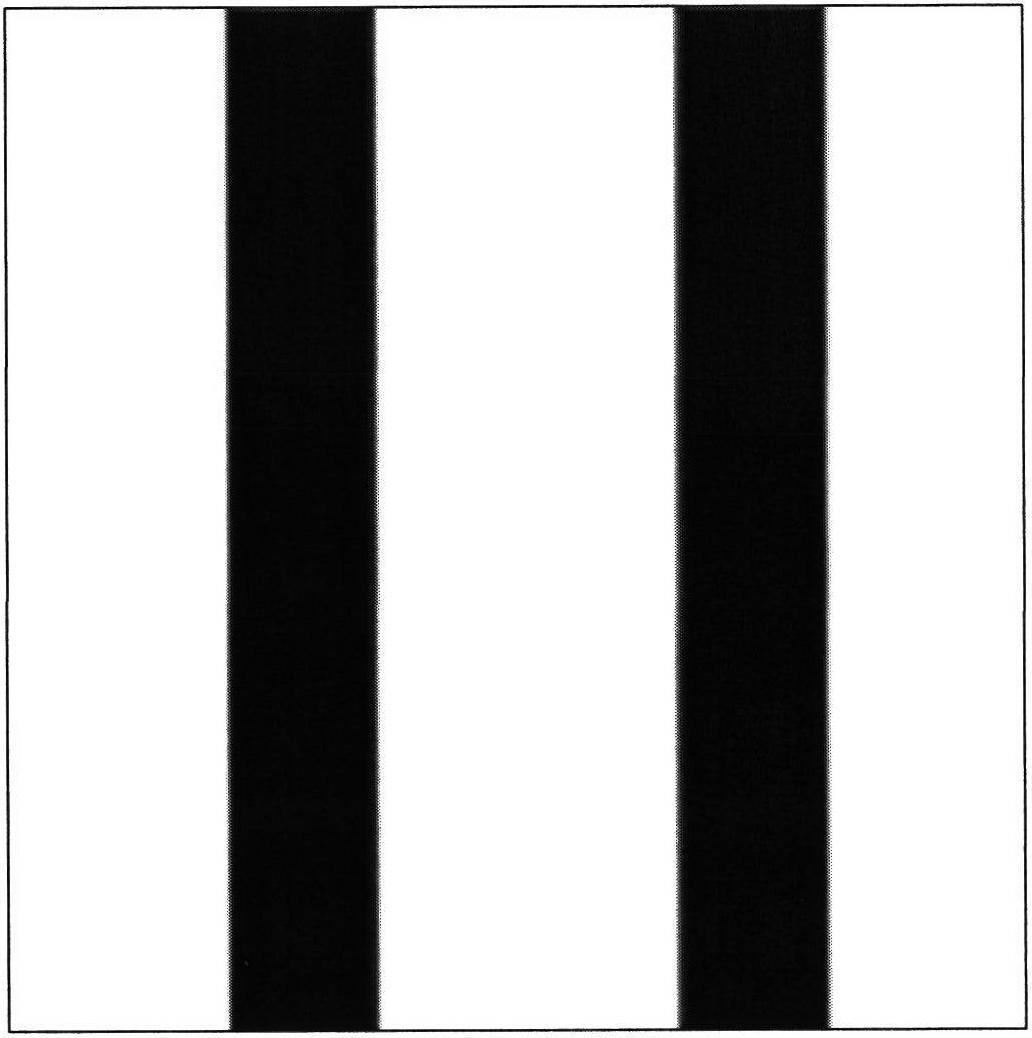Method for analyzing space images of high numerical aperture imaging system
A high numerical aperture and imaging system technology, applied in optical components, optics, instruments, etc., can solve problems such as error, simulation of high NA imaging system is not accurate enough, not fully applicable to imaging performance analysis, resolution enhancement technology optimization method, etc., to achieve The effect of guaranteeing accuracy
- Summary
- Abstract
- Description
- Claims
- Application Information
AI Technical Summary
Problems solved by technology
Method used
Image
Examples
Embodiment
[0113] Such as Figure 6 As shown in , the lithography projection system designed in the laboratory is used in the simulation, and the aberration of a certain off-axis field of view point is selected as a representative. 601 to 608 are the eight Jones pupil components of the two-dimensional polarization aberration at the point of view. 601 and 602 are respectively J xx The real and imaginary parts of . 603 and 604 are J respectively xy The real and imaginary parts of . 605 and 606 are J respectively yx The real and imaginary parts of . 607 and 608 are respectively J yy The real and imaginary parts of .
[0114] Such as Figure 7 shown, for Figure 6 In the same projection system, select the same field of view point. 701 to 718 are 18 pupil components of the three-dimensional polarization aberration at the point of view. 701 and 702 are P xx The real and imaginary parts of . 703 and 704 are respectively P xy The real and imaginary parts of . 705 and 706 are P xz...
PUM
 Login to View More
Login to View More Abstract
Description
Claims
Application Information
 Login to View More
Login to View More - R&D
- Intellectual Property
- Life Sciences
- Materials
- Tech Scout
- Unparalleled Data Quality
- Higher Quality Content
- 60% Fewer Hallucinations
Browse by: Latest US Patents, China's latest patents, Technical Efficacy Thesaurus, Application Domain, Technology Topic, Popular Technical Reports.
© 2025 PatSnap. All rights reserved.Legal|Privacy policy|Modern Slavery Act Transparency Statement|Sitemap|About US| Contact US: help@patsnap.com



